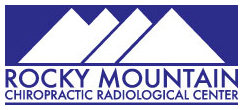Does Altered Biomechanics Cause Bone Marrow Edema?
A study of 12 volunteers at Thomas Jefferson University is performed by altering the student’s biomechanics placing a 1.4 inch foot pad in one shoe. This produced abnormal stress to the lower extremity and MRI imaging of the lower extremity of both the right and left side was performed prior to the foot insert and two weeks after the insert was removed. Bone marrow edema was initiated in 11 of the 12 candidates. There was bone pain over the areas of bone marrow edema. The majority of the edematous changes were in the foot and ankle with 2 patients having edema in the knee and 2 patients in the hip.
Active Vs. Inactive Spondylolisthesis. What is the Real Cause of Back Pain?
An overview of the symptom generating spondylolisthesis patients vs. the non-symptom generating spondylolisthesis patients is reviewed in this article. An attempt to change the paradigm evaluating that which is a current (active) pars defect vs. a non-current or old (inactive) pars defects or spondylolisthesis is reviewed. Detailed discussion of the use of STIR imaging with MRI to evaluate physiological uptake in the area of back pain, perhaps associated with underlying bone marrow edema. Some discussion for treatment is reviewed with the use of a Boston Overlap Brace (antilordotic brace).
Spondylolysis and Spondylolisthesis – Let’s Get It Right and Stir Things Up
A complete discussion of the use of STIR imaging to evaluate subtle bone marrow edema in patients with inactive pars defects or a hidden pars defect (pending spondylolysis). The use of STIR imaging is the most sensitive imaging modality to detect subtle or early bone marrow edema in patients with active pars defect or a pending pars defect. This imaging sequence is absolutely necessary and all athletes doing repetitive hyperextension or may have a positive stork test
Pending Spondylolysis or Spondylolisthesis
A detailed discussion of hidden pars defects (pending) is offered. The use of T2-weighted – STIR imaging is emphasized. The fact that the patient has negative x-rays, but has a positive history of repetitive hyperextension and positive Stork test raises the suspicion of a hidden spondylolysis. The appropriate term for this is pending spondylolysis and should be thought of in a patient who has lots of physical activity that is being done in a repetitive hyperextension axial load.

